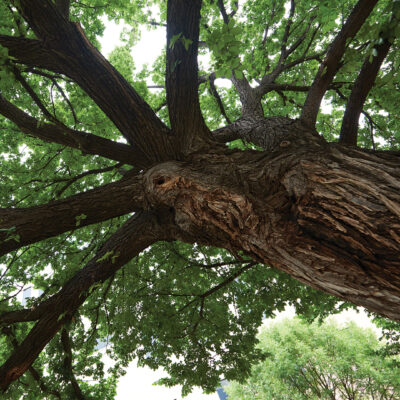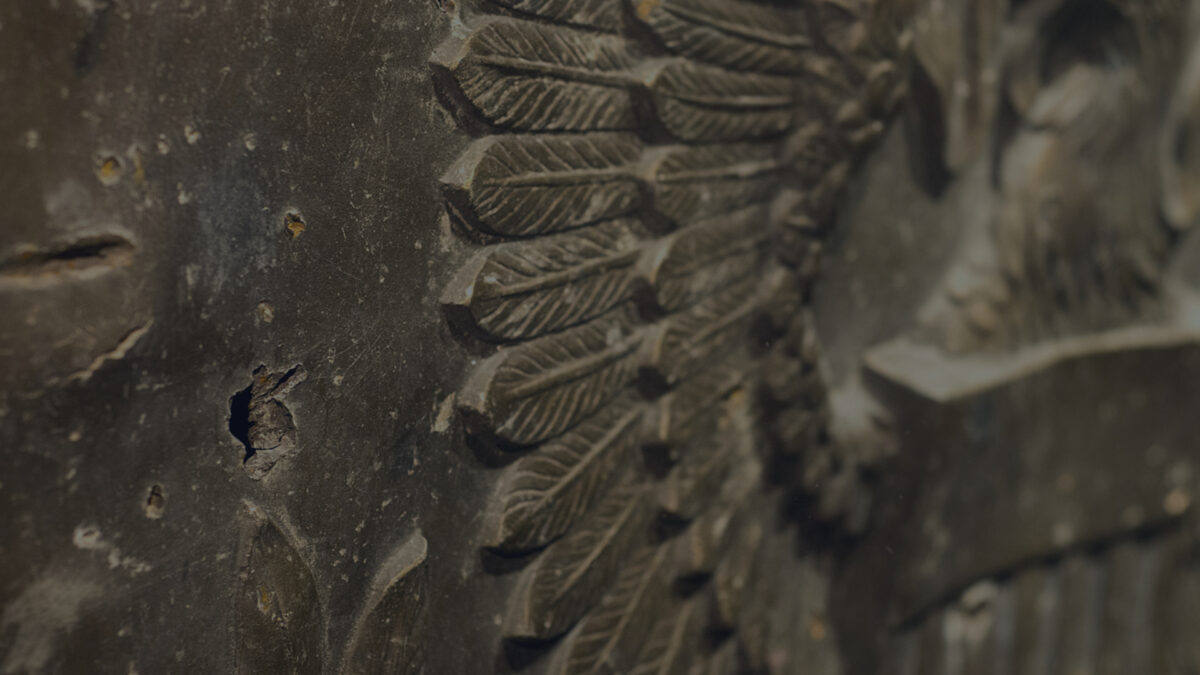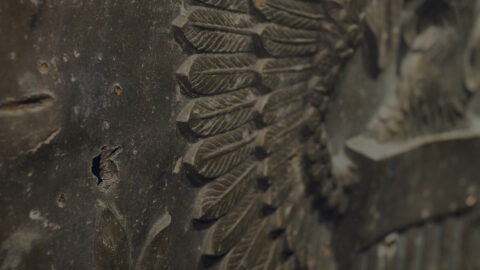Growth and Perseverance
This century-old American elm could have succumbed to the brutal attack of the Oklahoma City bombing. But it survived. It grew. And more importantly, it became an icon to people here and around the world. Because like our city, our people, family members of victims, the survivors, first responders and others, it endured what most thought would break it.
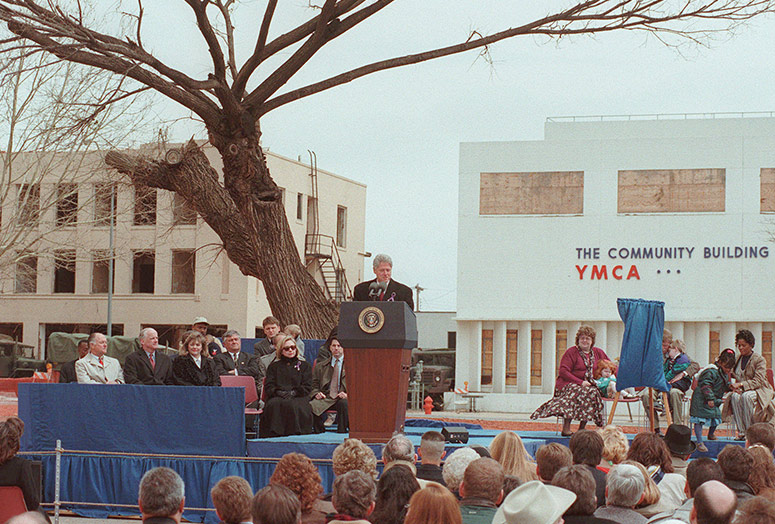
As the Oklahoma City community – and the world – recovered from the shock of the bombing, it became clear that this formerly scorned tree meant something to us all. FBI investigators wanted to cut it down to remove evidence – bombing shrapnel – from it. Cleanup of the area seemed to require its removal. But it was protected. It had taken on a new significance for everyone involved.
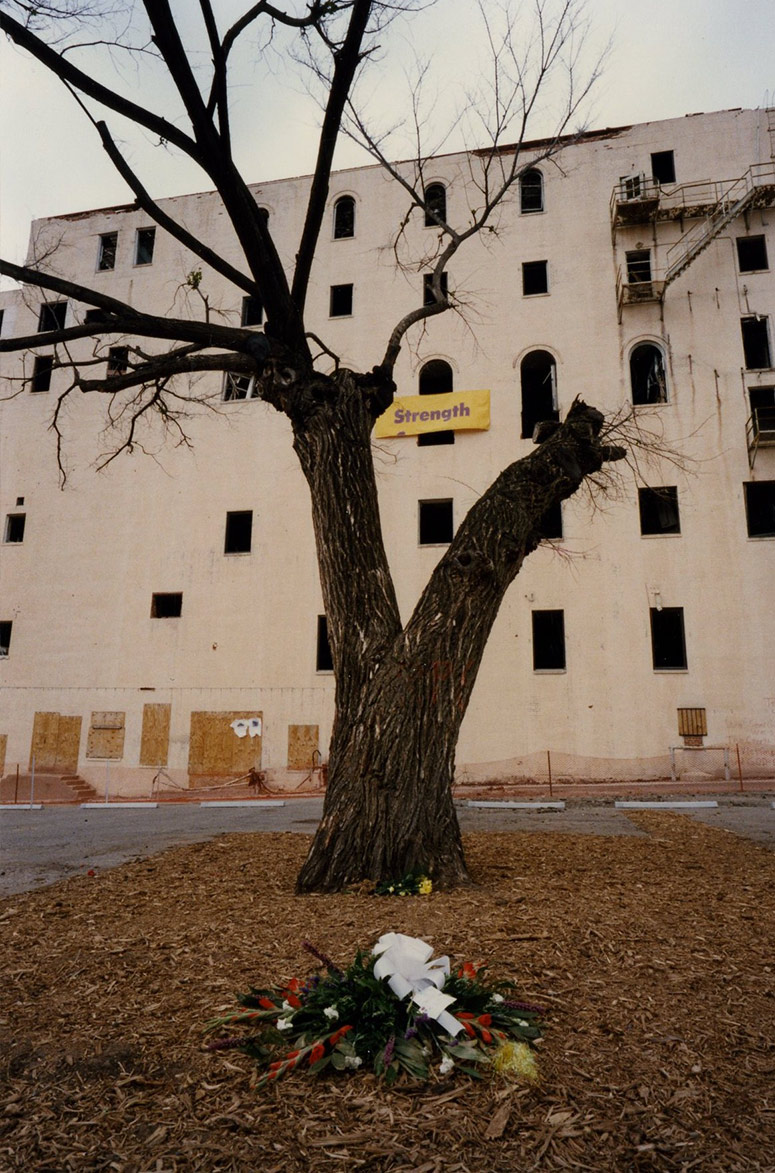
The Survivor Tree became a steadfast symbol of resilience and its protection was mandated as part of the Memorial Mission Statement.
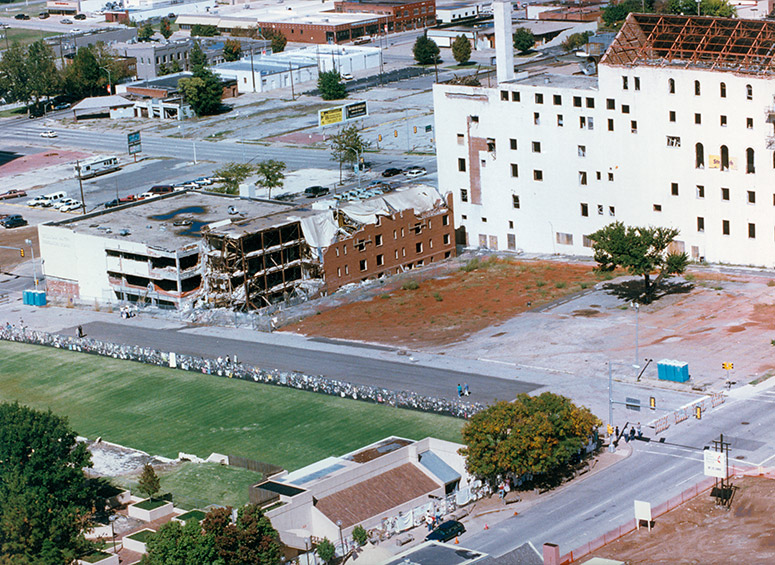
As preliminary planning for a permanent Memorial began, it was quickly determined that any design must include the Survivor Tree – an integral part of the story of what happened here, as well as our hope for the future.
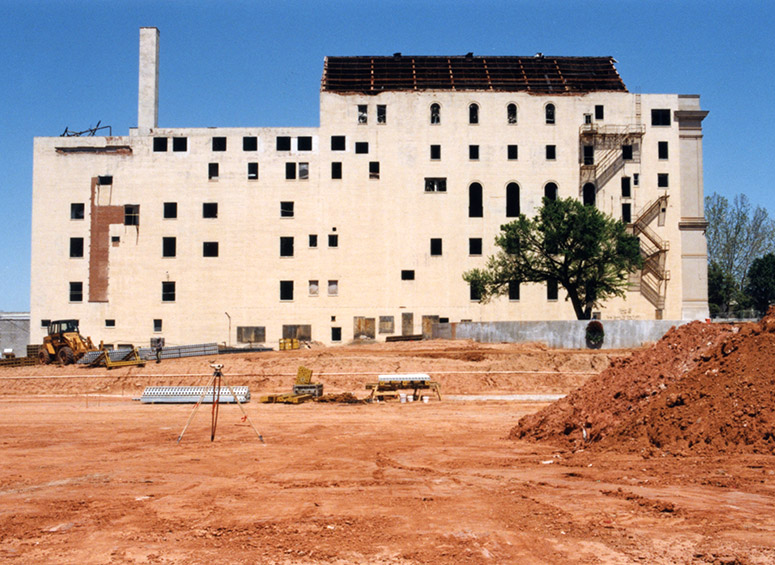
The Survivor Tree has become a beacon of hope, and its roots have grown deep into the Oklahoma City National Memorial and the fabric of this city. Today, arborists from the Oklahoma Department of Agriculture, Food and Forestry help care for the tree.
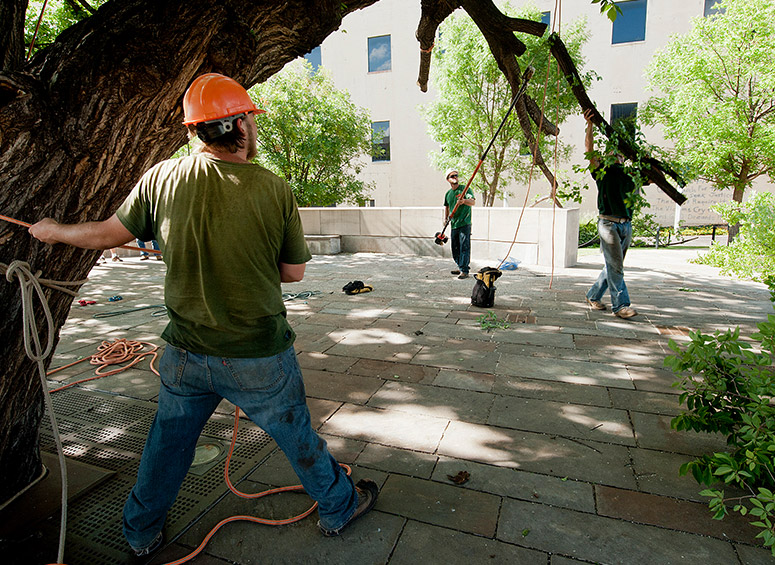
To ensure the Survivor Tree’s meaning is never lost – and that its message can spread, the Oklahoma City National Memorial & Museum has developed a special Lesson Plan to teach the Survivor Tree’s meaning. Saplings and seeds have also been made available. Today, clones and descendants of the Survivor Tree are growing outside of homes, monuments and other places of remembrance across the country and as far away as Israel. Learn more about the Survivor Tree’s future here.

